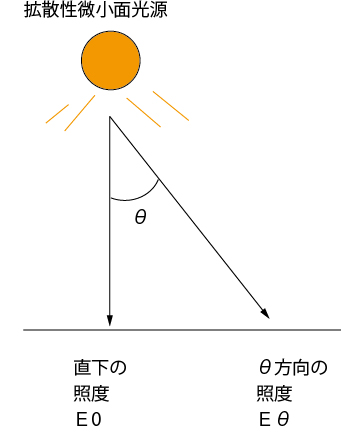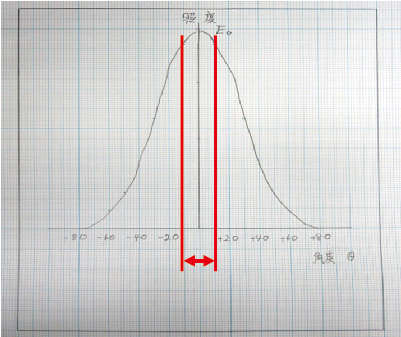
The equation is correct: E(θ)=E0(cosθ)4E(\theta) = E_0 (\cos \theta)^4.
As you move away from the center, the illuminance drops steeply:
- At 30°, it decreases to approximately half (12\frac{1}{2}).
- At 45°, it decreases to approximately one-fourth (14\frac{1}{4}).

In practical lighting scenarios, the diffusion (or conversely, directionality) of light sources varies, resulting in diverse beam characteristics that may not perfectly align with theoretical values. However, they serve as rough guidelines.
To achieve uniform illumination over a certain area, efforts are made to utilize the central region (the “redder” area) as much as possible and to flatten out its characteristics as much as feasible. This can be achieved by using lenses, diffusers, or other optical elements.
It’s important to note that with point sources (such as small area illuminations), achieving completely uniform illumination across a large area is generally not possible.



